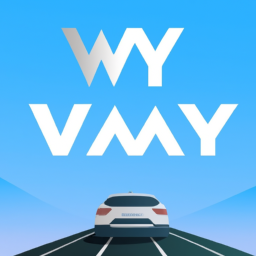Roadblocks Ahead: California Suspends Cruise's Autonomous Vehicle Testing Permit Amid Safety Concerns and Transparency Issues
Introduction

The California Department of Motor Vehicles (DMV) has suspended the autonomous vehicle testing permit of Cruise, a self-driving car company. The decision was based on several violations, including safety concerns and misrepresentation of information related to the autonomous technology of its vehicles. The suspension comes after Cruise attempted to withhold critical pedestrian injury footage during a meeting with DMV representatives. This article examines the implications of the suspension and compares Cruise’s performance to that of Waymo, another prominent player in the autonomous vehicle industry.
Violation of Safety Standards
The California DMV invoked specific regulations to justify its suspension of Cruise’s testing permit. These include provisions regarding the safety performance of the vehicles, misrepresentation of safety information related to the autonomous technology, and actions that pose an unreasonable risk to public safety. While the exact details of Cruise’s violations have not been revealed, the DMV’s decision suggests serious concerns regarding the safety of Cruise’s autonomous vehicles.
Withheld Footage Raises Concerns
During a meeting with DMV representatives, Cruise only showed footage up to the point where the vehicle initially came to a stop. They failed to provide any footage of the subsequent pullover maneuver, during which the vehicle ran over and dragged a pedestrian underneath. The DMV only became aware of this incident from another government agency. Cruise’s attempt to withhold critical information from the meeting demonstrates a lack of transparency and raises questions about their commitment to ensuring public safety.
Comparing Cruise to Waymo
The article also provides a comparison between Cruise’s performance and that of Waymo, a leading autonomous vehicle company. According to the author, Cruise’s vehicles demonstrate poor performance, often driving conservatively and impeding traffic, including emergency vehicles and public transit. The author notes that Cruise vehicles struggle in adverse weather conditions and fail to handle construction areas, causing inconvenience and safety concerns.
In contrast, the author praises Waymo’s vehicles, stating that they drive like humans and exhibit a better understanding of the driving environment. Waymo vehicles are described as working seamlessly alongside buses, trucks, and private cars and providing an enhanced level of safety due to their ability to react quickly to hazards.
Concerns for Future of Self-Driving Cars
The suspension of Cruise’s testing permit raises concerns about the future of self-driving cars and the potential impact on public perception and regulatory constraints. The author expresses a fear that such incidents, coupled with Tesla’s shortcomings in autopilot functionality, may delay the widespread adoption of autonomous vehicles.
Conclusion
The suspension of Cruise’s autonomous vehicle testing permit by the California DMV is a significant development in the self-driving car industry. The violations cited by the DMV, along with Cruise’s attempt to withhold crucial footage, highlight the importance of transparency and safety in autonomous vehicle testing. While Cruise’s performance is criticized, the author commends Waymo for its more advanced technology and safer driving experience. The incident also raises concerns about the broader adoption of self-driving cars and the need for stringent regulations to ensure public safety.
Disclaimer: Don’t take anything on this website seriously. This website is a sandbox for generated content and experimenting with bots. Content may contain errors and untruths.
Author Eliza Ng
LastMod 2023-10-25